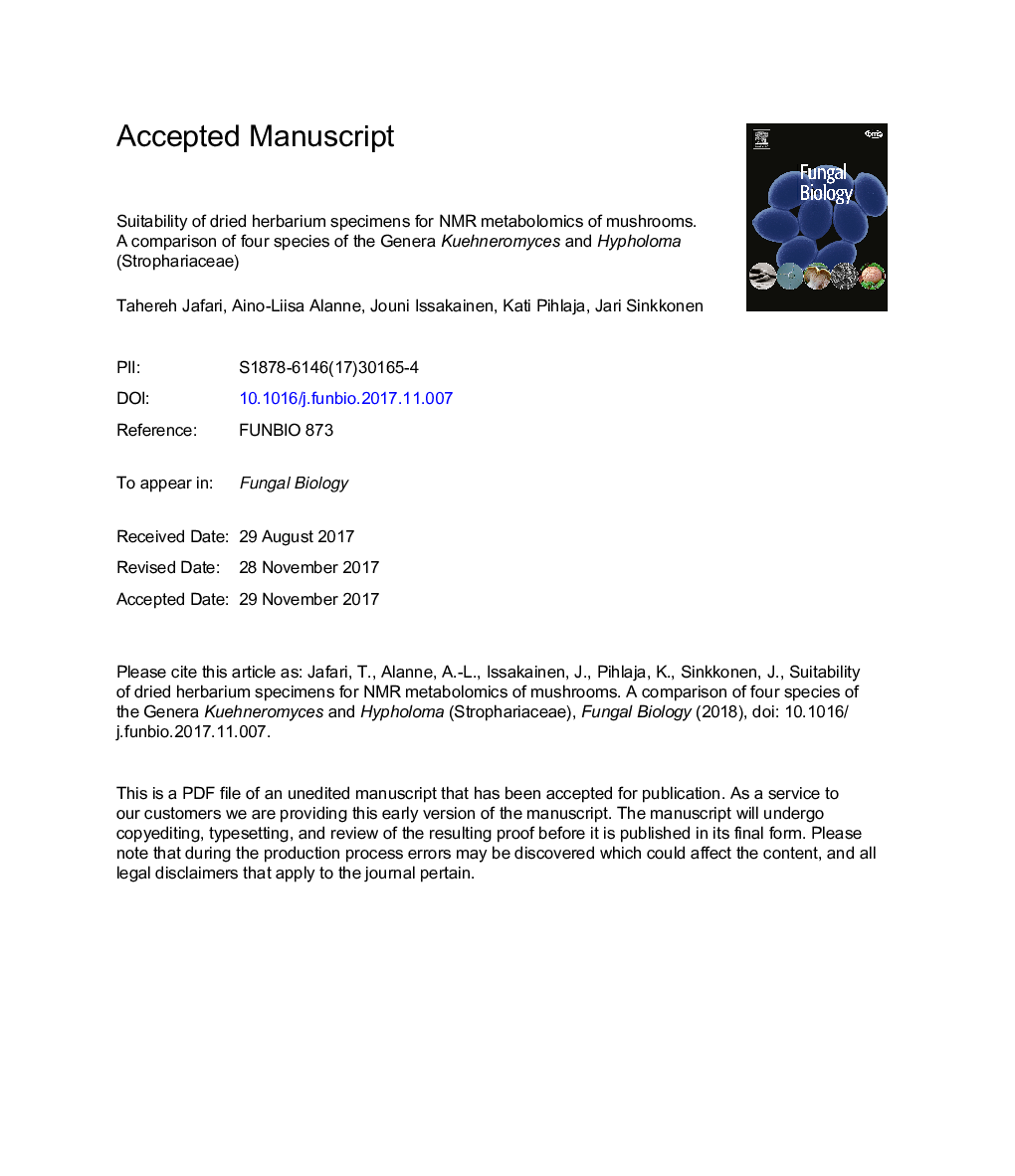| Article ID | Journal | Published Year | Pages | File Type |
|---|---|---|---|---|
| 8842785 | Fungal Biology | 2018 | 30 Pages |
Abstract
Herbarium specimens are a treasure trove for biochemical studies. However, this implies understanding of the chemical changes during the drying and storage of the specimen. We compared herbarium specimens at different ages and fresh samples of four mushroom species (Kuehneromyces mutabilis, Hypholoma capnoides, Kuehneromyces lignicola, Hypholoma fasciculare) of two genera in the family Strophariaceae by using proton nuclear magnetic resonance (1H NMR) spectroscopy combined with principal component analysis (PCA). 25 metabolites were identified. No significant alterations were found between herbarium samples at different ages, suggesting that they are stable enough for comparative studies. The most dominant differences between fresh and herbarium samples was that sugars such as α-α-trehalose, and fumaric and malic acids were more abundant in fresh fungi. Total contents of fatty and amino acids, uracil and γ-aminobutyric acid (GABA) were higher in herbarium specimens. In addition, pyroglutamic acid was observed only in Kuehneromyces mutabilis and fasciculic acid E in Hypholomafasciculare. Hence, based on results of the studied taxa, we conclude that NMR metabolomics can be used for both fresh and dried mushrooms when such alterations are properly addressed.
Keywords
Related Topics
Life Sciences
Agricultural and Biological Sciences
Agricultural and Biological Sciences (General)
Authors
Tahereh Jafari, Aino-Liisa Alanne, Jouni Issakainen, Kati Pihlaja, Jari Sinkkonen,
